
Product Model:
ESP55X-C0D(I)Data Rate:
10GWavelength:
1550nmDistance:
120KMConnector:
LCFiber Type:
SMDDM:
YesProduct Origin:
ChinaShipping Port:
ShenZhen
Product Description
Key Features
 |
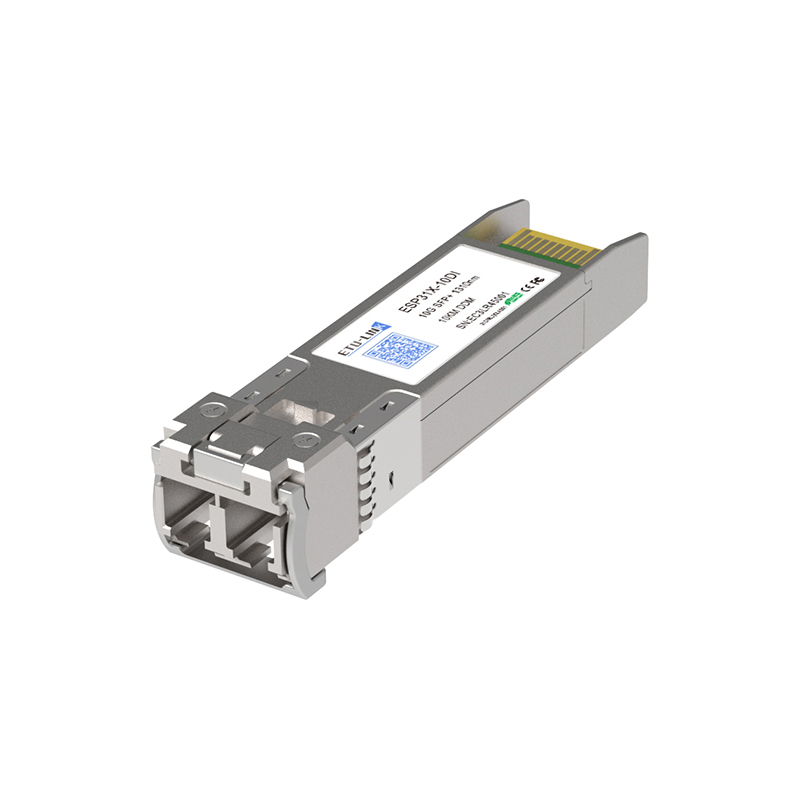 |
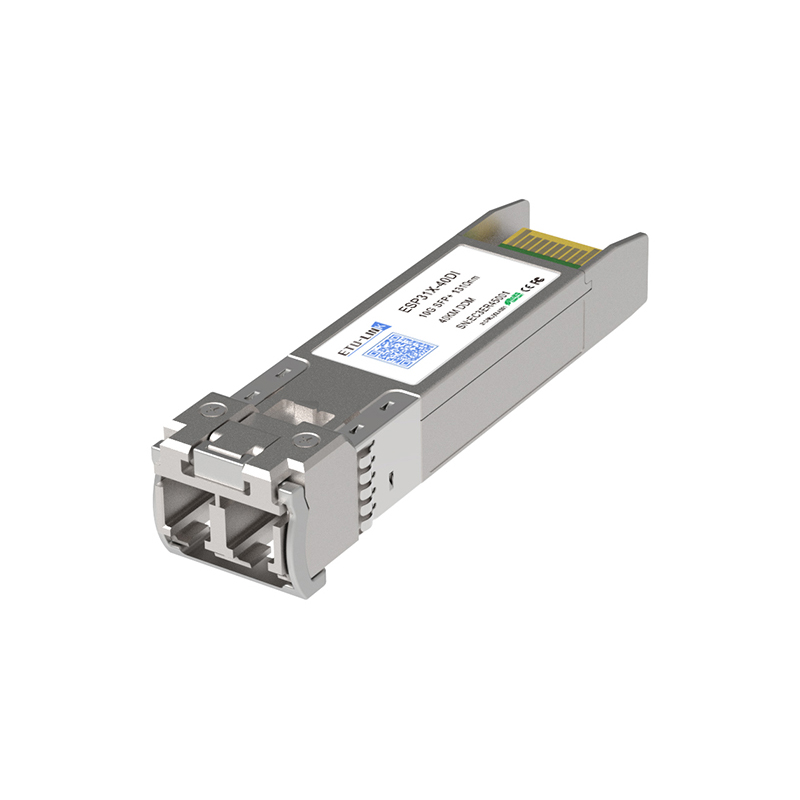 |
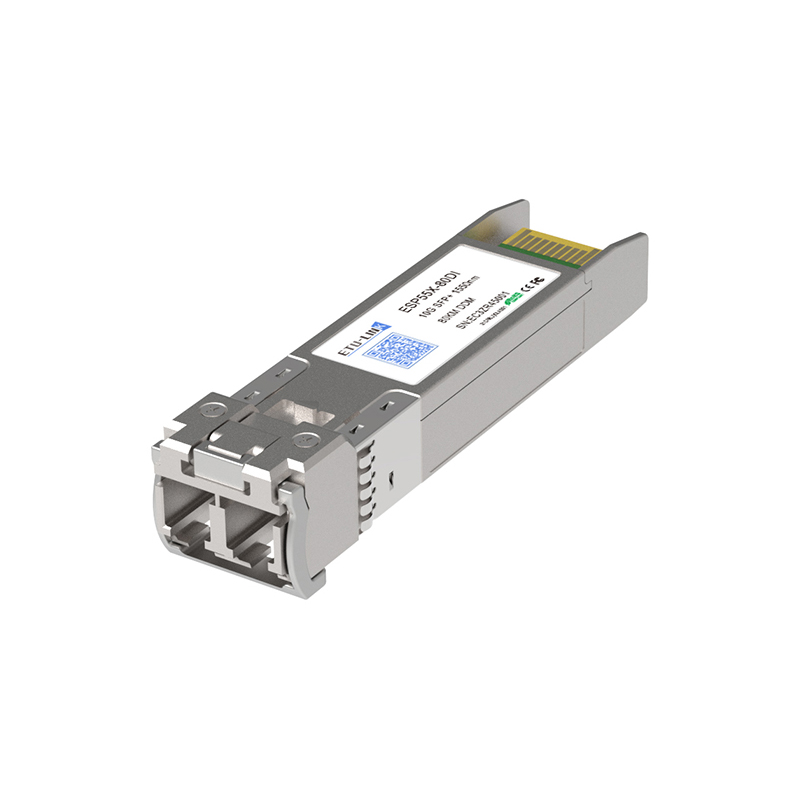 |
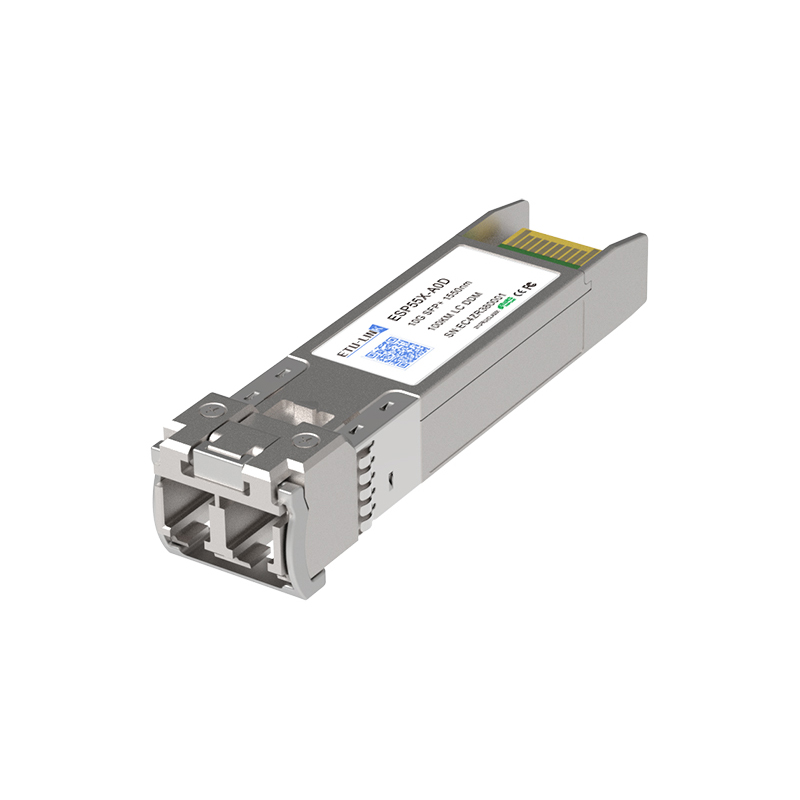 |
|
SFP+ SR 850nm 300M |
SFP+ LR 1310nm 10KM |
SFP+ ER 1310nm 40KM |
SFP+ ZR 1550nm 80KM |
SFP+ ZR 1550nm 100KM |
|
10G |
10G |
10G |
10G | 10G |
|
850nm |
1310nm |
1310nm |
1550nm |
1550nm |
|
300M |
10KM |
40KM |
80KM |
100KM |
|
LC |
LC |
LC |
LC |
LC |
|
MM |
SM |
SM |
SM |
SM |
|
DDM |
DDM |
DDM |
DDM |
DDM |
|
COM: 0°C ~70°C |
COM: 0°C ~70°C EXT: -20°C ~85°C IND: -40°C ~85°C |
COM: 0°C ~70°C IND: -40°C ~85°C |
COM: 0°C ~70°C EXT: -20°C ~85°C IND: -40°C ~85°C |
COM: 0°C ~70°C EXT: -20°C ~85°C IND: -40°C ~85°C |
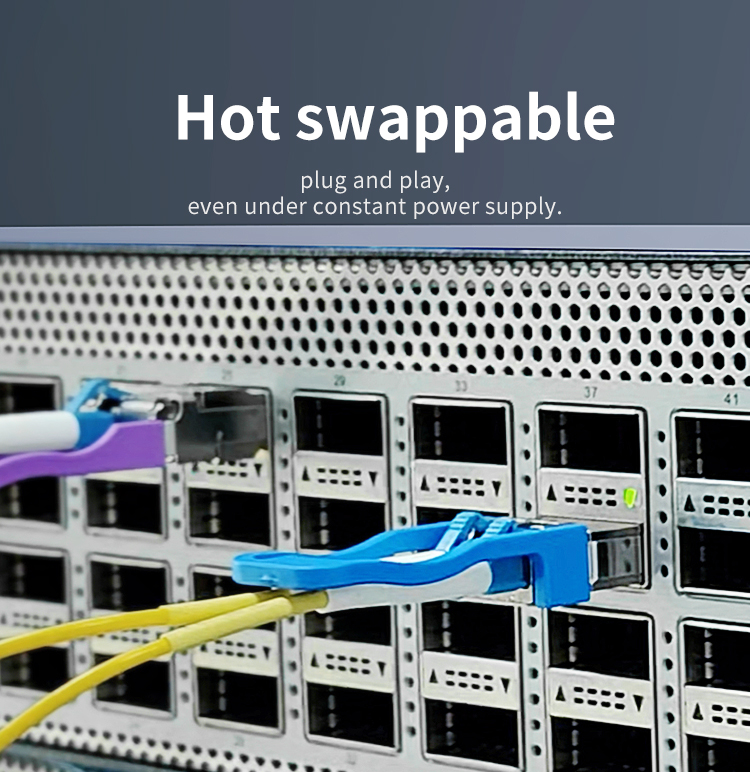
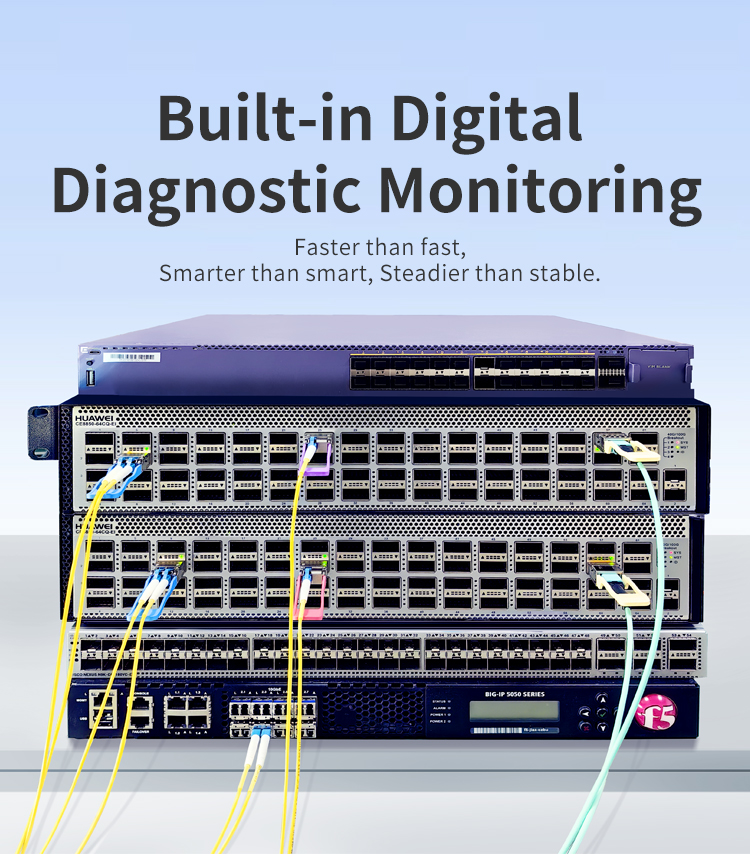

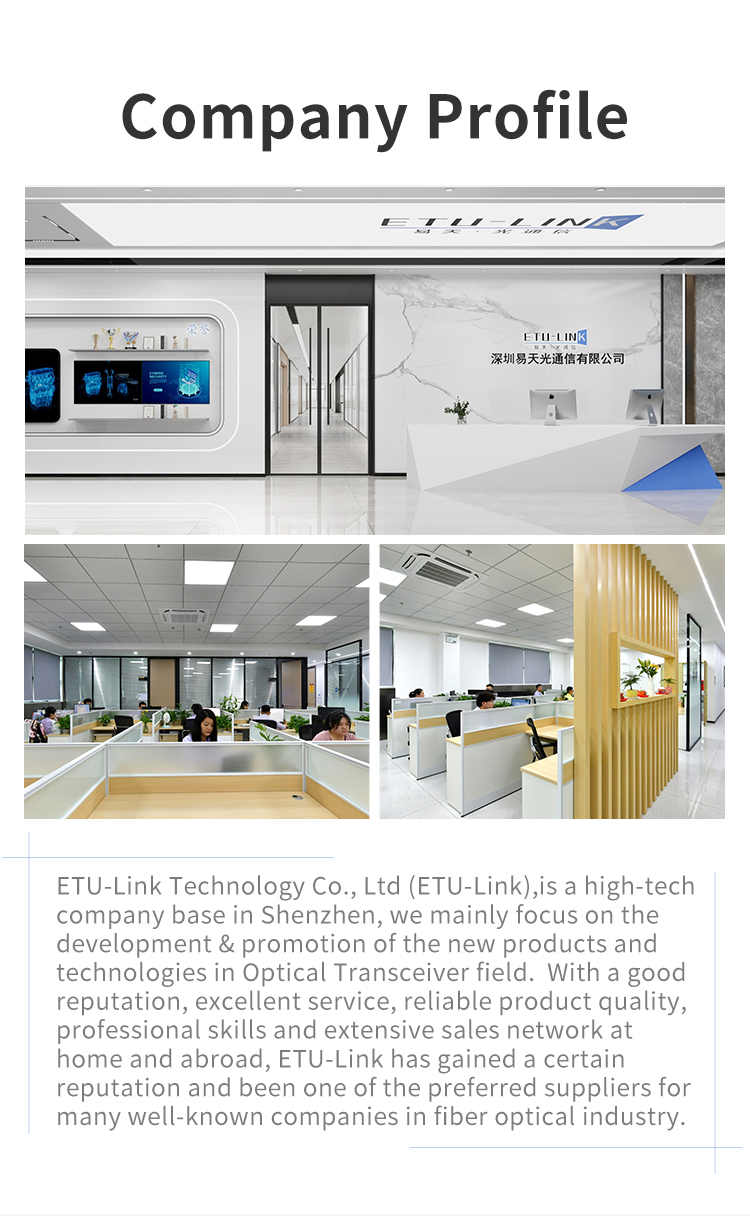


Q1: Can 10G SFP+ LR modules work with single-mode fibers?
A1: Yes, standard 10G-LR modules require OS2 single-mode fiber (1310nm wavelength) with 10km reach.
Q2: Can I use 10G BiDi SFP+ for duplex fiber conversion?
A2: Yes, BiDi modules (1270nm/1330nm) enable single-fiber bidirectional transmission on existing duplex fiber plants.
Q3: Why do some 10G SFP+ modules require external clock circuits?
A3: High-speed modules (e.g., 10G-LR) use CDR (Clock Data Recovery) chips to reduce jitter, requiring precise clock synchronization circuits on host PCB designs.
Q4: Can I plug a 10G SFP+ module into an SFP port?
A4: Physically compatible, but electrically incompatible – SFP ports lack 10G SerDes lanes, causing link failure unless switch supports rate adaptation.
Q5: What is difference between SFP and SFP+?
A5: The main difference between SFP and SFP+ is that the SFP+ is used in Gigabit Ethernet applications while SFP is for 100Bse or 1000Base applications. SFP doesn't support 10G transmission data rate, which means they can't be used in the same network.
Q6: What is SFP+ port used for?
A6: SFP + modules are commonly used for Gigabit Ethernet and 10 Gigabit Ethernet connections and can adapt to various application scenarios, including high-speed network connections and fiber optic links.
Q7: How to choose between SR, LR and ER optical modules?
A7: SR (Short Reach) for ≤300m multimode, LR (Long Reach) for 10km single-mode, ER (Extended Reach) for 40km+ single-mode applications.
Q8: What are the advantages of 10G SFP+ BIDI?
A8: Key Benefits:
Single-Fiber Solution - Uses WDM to transmit/receive on one fiber (e.g., 1270nm/1330nm pairing)
Cost Savings - 50% less fiber usage, 30-40% lower installation costs
Space Efficiency - Doubles port density without new cabling
Applications: areas with limited fiber resources, 5G fronthaul networks, metropolitan area network expansion, and high-density data center interconnection.
Q9: Do 10G modules support DDM/DOM monitoring?
A9: A: Yes, compliant modules follow SFF-8472 for real-time monitoring of temperature, TX power, and RX sensitivity.
Q10: What is the maximum transmission distance of ETU-Link optical modules?
A10: Our modules support from 100m (SR multimode) up to 120km (ZR single-mode), with specific models optimized for 300m, 10km, 40km, 80km and 120km applications.
The Ultimate Guide to 10G SFP+ Transceivers: From Short Reach to 120km
Understanding the different types—from multi-mode SR to ultra-long-haul BiDi and DWDM—is key to building a cost-effective and high-performance network. Complete overview of the 10G SFP+:
1. Short-Reach and Cost-Effective Solutions
For connections within a server rack or across a data hall, short-reach modules are the most economical choice.
(1) 10G SFP+ SR: The standard for multi-mode fiber (MMF). Uses an 850nm wavelength and typically reaches 300 meters over OM3 cable or 400m over OM4. Models like the SFP-10G-SR and SFP-10G-SR-S are ubiquitous and offered by all major brands.
2. Long-Reach and Extended Reach Single-Mode Modules
When you need to connect buildings or campuses over single-mode fiber (SMF), these modules are essential.
(2) 10G SFP+ LR: The standard long-reach module. It uses a 1310nm wavelength for distances up to 10km. The SFP-10G-LR its equivalents from vendors are industry staples.
(3) 10G SFP+ ER / 10G SFP+ ZR: For distances far beyond 10km, ER and ZR modules are the answer:
1) ER modules typically reach 40km.
2) ZR modules push the limit to approximately 80km. These are critical for metro-edge applications.
3. Fiber-Efficient and Specialized Solutions
This category addresses specific challenges like fiber scarcity and high-density wavelength multiplexing.
A. 10G SFP+ BiDi (Bidirectional)
BiDi transceivers are a game-changer for maximizing existing fiber infrastructure. They transmit and receive on two different wavelengths over a single strand of fiber.
1) Common Wavelengths: The most common pairs are 1310nm/1490nm and 1270nm/1330nm. A 10g bidi optical transceiver 1310nm1490nm must be used with a matching pair (e.g., 1490nm/1310nm) on the other end.
2) Distance Variants: Available for 20km, 40km (sfp bidi 10g 40km), 80km (module sfp 10g bidi 80km), and even extreme reaches like 100km(bidi sfp 10g 100km).
B. 10G SFP+ CWDM and DWDM
For the ultimate in fiber capacity, Wave Division Multiplexing (WDM) is used. It allows multiple 10G channels to travel over a single fiber pair.
1) CWDM SFP+: Coarse WDM from 1270nm to 1610nm with a 20nm spacing. Ideal for 10km to 80km links, CWDM 10g modules are a cost-effective way to increase bandwidth.
2) DWDM SFP+: Dense WDM uses tighter channel spacing (e.g., 0.8nm/100GHz). DWDM 10g sfp modules, including tunable versions, are the backbone of long-haul and core networks, supporting distances of 100km.
If you are interested in our products and want to know more details,please leave a message here,we will reply you as soon as we can.
Categories
© Copyright: 2025 ETU-Link Technology CO ., LTD All Rights Reserved.

IPv6 network supported
Friendly Links:
易天官网